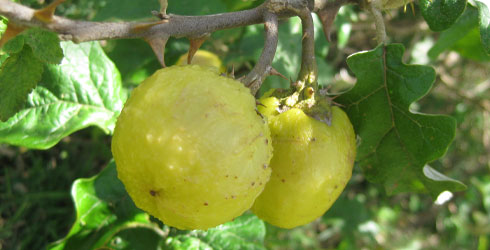Solanum aculeastrum
Solanum aculeastrum has a spiny stem and is recognised by its bright yellow berry, which is often compared to lemons.
Solanum aculeastrum is found in Africa and is most abundant across Uganda, Democratic Republic of the Congo, Kenya, and Tanzania.
Solanum aculeastrum has a wide range of uses, it is
- commonly planted as a hedge
- placed across the roads to prevent vehicle access - spines are hard enough to rupture tyres
- some varieties have edible fruit
- medicine
- the fruit and leaves are used in the
- treatment of swelling joints in fingers
- to prevent gangrene
- drying and pounding roots
- taking a little on tongue twice daily for an enlarged spleen
- as eyewash.
- the fruit and leaves are used in the
Species detail
-

Taxonomy
Learn about the form and structure of Solanum aculeastrum and get a diagnostic description of the species.
-

Distribution and habitat
Discover the areas of Africa where Solanum aculeastrum is found and the types of habitat it grows in.
-

Biology
Learn information regarding the size of Solanum aculeastrum, how it is pollinated and the means by which it is dispersed.
-

Uses
Solanum aculeastrum has a wide variety of uses, learn more about how it is used in everyday life and find out vernacular names for the species.
-

Conservation
Find out the conservation status for Solanum aculeastrum and learn about potential threats facing its survival.
-

References
Get reference material for Solanum aculeastrum.
Images
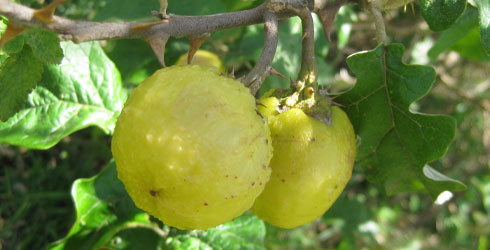
Solanum aculeastrum
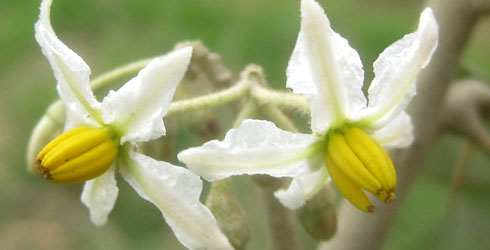
Solanum aculeastrum flowers are white or rarely pale purple.
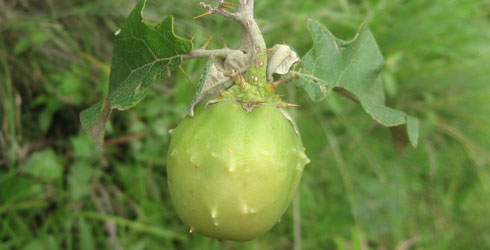
In the Kenyan and north Tanzanian highlands Solanum aculeastrum can be recognised by its globose to elliptic or pyriform fruit less than two times longer than wide.
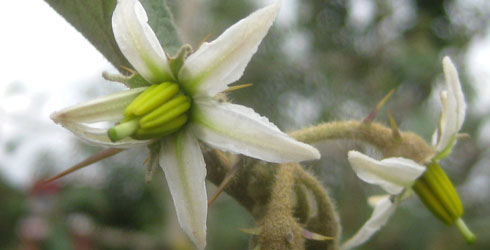
Solanum aculeastrum flowers.
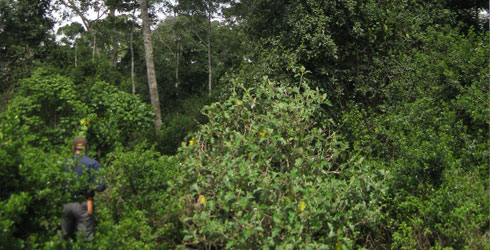
Solanum aculeastrum occurs in forest margins, grassland, scrub, and open disturbed places at 1200-2100m elevation, occasionally found up to 3200m elevation.
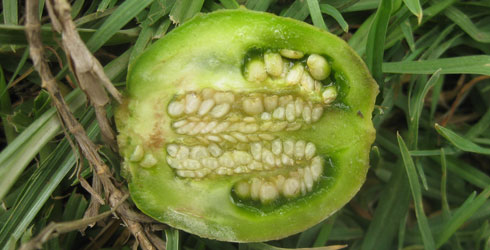
The fruit of Solanum aculeastrum is sweet and eaten by elephants and cattle.
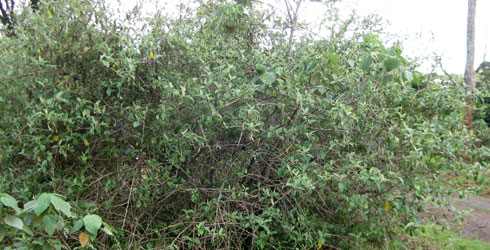
Solanum aculeastrum is often planted as a hedge.
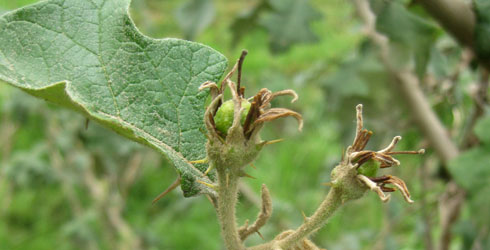
Solanum aculeastrum
About the author

$linktitle
Researching the spiny Solanum of Africa and Madagascar using traditional botanical systematics techniques.
Toolbox
Common names
- Mutugunda
- Omutugunda
- Mutura
as well as the less commonly used
- Umotobo,
- Kood (Lateba)
- Niva fera-fera
- Temberere
- Imitobotobo (Kirundi)
- Motobatoba (Ruanda)
